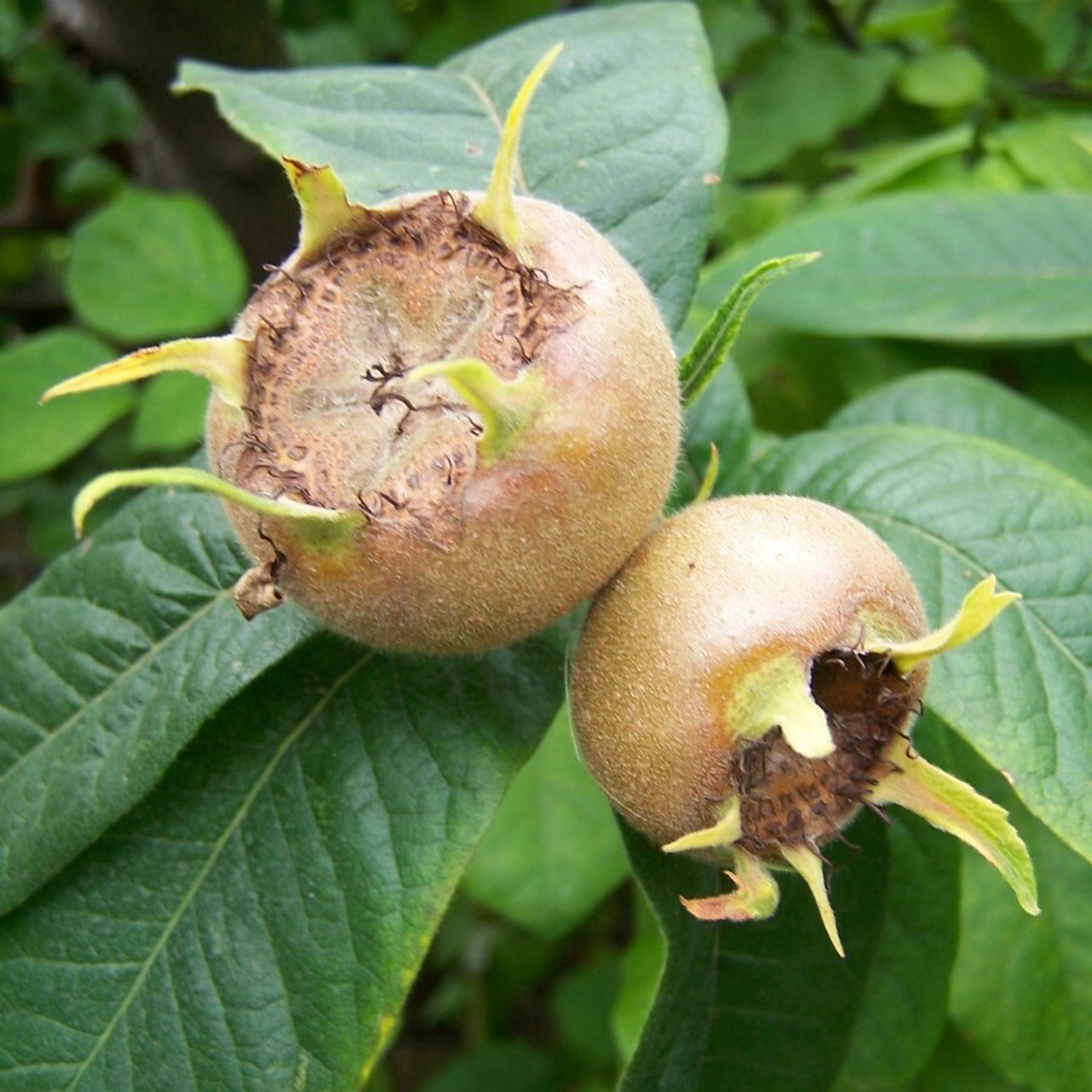
Medlar
A much-prized luxury fruit of the Middle Ages, a medlar produces an unusual flat topped but very decorative fruiting tree. Rather slow-growing it tolerates a wide range of soils, being very hardy and very long lived, and making a very attractive shape. The mass of large white flowers produced in May are followed by unusual flattish fruits in the autumn, which are rock hard and must be allowed to soften to become edible. If the fruit is wanted to be eaten raw, it should be left on the tree until late October and then picked and stored until it appears to be softening in the first stages of decay. This softening is called 'bletting', a process during which the sugars increase and the acids and tannins decrease. Only when the fruit has turned deep brown in colour and the flesh become softer is it ready for eating. Alternatively, the fruit can be made into a pink jelly with a very distinctive flavour.
Thought to have originated somewhere in the region of Persia from whence it spread to south-eastern Europe, the medlar was known to the Greeks by 300BC. Whilst it can be found in hedgerows in southern England it is not a true native but has simply naturalised over the years. It is thought likely to have been brought here by the Romans, and a tree in Hertfordshire which was recorded as being planted during the reign of James I (1603 to 1625) was reportedly still alive around the turn of the century.
For more information on how to grow medlars, see our Knowledge Base article here
Top fruit trees are all supplied as bare root plants during the winter months (November - March).

